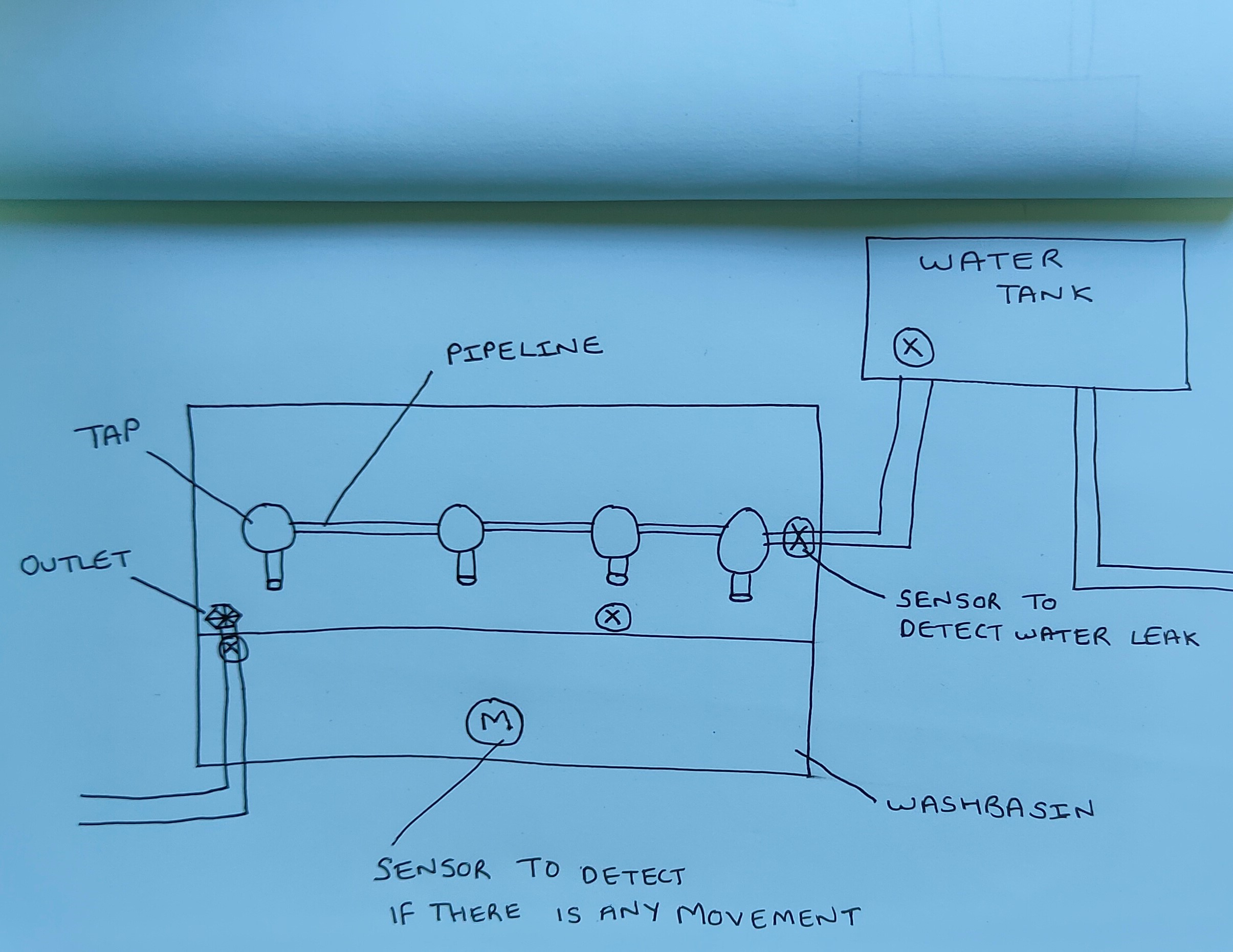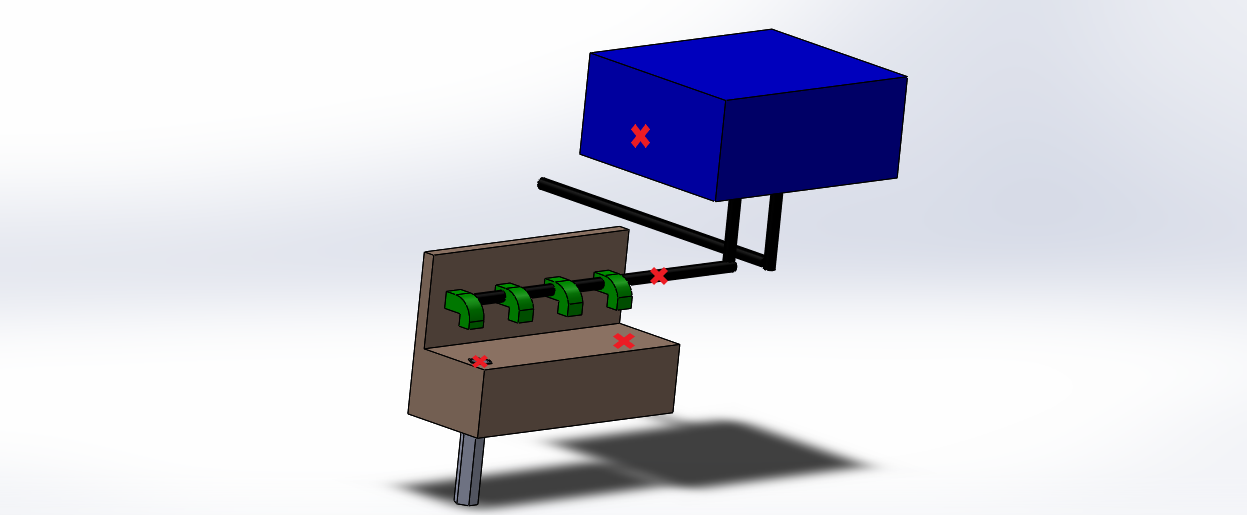Principles and Practices
Table of content:
1 - Drip Irritation1.1 - Problem 1.2 - Solution 1.3 - Expectation from this project 1.4 - Challanges
2 - Executing the final project
Drip Irritation
This project is about detecting water leakage.
when i say detecting water leakage, i have in my mind a specific thing and that is detecting water leakage from taps/faucets (washbasin) in
public places like railway/bus station, school or any institution etc. They generally have single washbasin with multiple taps. The
reason why i want to work on that project is that for countless number of time i have seen leaking tap in public places and every time I spare
few seconds to adjust the tap so that it temporarily stop dripping. But that's not the solution.
If the project goes successful, we can use the same principle on different application, then it won't be restricted just for the washbasin.
<<<---PROBLEM--->>>
As the taps in public places are used regularly, it is bound to diminish over a period of time. What happens after is, the taps starts
leaking in form of drops or sometimes even stream. You might have observed in some taps that the water will keep running if you close the tap
fully, the water will keep running if you have the tap slightly open. So in order to stop the water from running, you have to precisely rotate
the knob in the place which is neither fully closed nor open. Also, due to carelessness, sometimes the taps are kept partially/fully
open by the people.
The project will be effective only if there are these problems,
[1] Ignorance
whoever is in charge of
maintainance of places like railway/bus station or school, doesn't know if there is a leak from the washbasin. However, would have made
efforts to repair the leak.
[2] Lack of communication
some people might observe the leak, but won't know whom to inform. Or even if
informed to any staff, chances are the message won't reach the people incharge of maintainance.
[3] Value of water
none of the below
solution or thoughts would matter if the places doesn't value the water that is being wasted.
<<<---SOLUTION--->>>
This project will only INDICATE you if the water is running. It won't solve the issue.

[1] bifurcate between usage and leakage
We can put some kind of motion detector near washbasin(the "M" in thge sketch
indicate motion sensor) So if there is any movement near washbasin when water is running that means the taps is in use. When the water is
running from the taps and no movement is detected, that means water is leaking
[2] detecting the running water
there has to be some kind of sensor or thing, which i dont know now so i have named it X, which will detect the running water.
that X can be placed at,
1- water tank
OR
2- pipeline tha supplies water to the taps
OR
3- under each tap
OR
4- outlet.
so if we decide to put the X in water tank, we can use some kind of water level sensor. If we decide to put the sensor or X under
each tap then we can use some
kind of rain drop sensor, where the water will fall on the X, completing the circuit.
However, if we put the X under the tap, then the feedback/response will be insant.
If we put the X
inside water tank then depending upon the size of tank, a lot of water will already be wasted by the time the sensor gives any input after the
water level is dropped to a certain level.
As of now i don't know how am i going to detect the running water.
so combining these two we can detect the leakage from the taps, as in if the water is running and there is no movement detected, then the
controller will know it is a leakage
and notify about the same
<<<---EXPECTATION FROM THIS PROJECT--->>>
- it should give separate data of leaking drops and stream
- the data should show how much water is wasted from the leak(calculated measurement)
- smart indication, should notify via notification
<<<---CHALLENGES--->>>
- detecting the drops
- making the project compact
- making it at cheap cost
- maintainance after the product is ready
cost and maintainance could be a great reason for public place or institution to reject installing the project.
I am attaching photo of a 3D design too, just in case

I have worked on the project before and it was a long time ago, back then i was successfully able to detect the stream, but detecting the
drops was not very accurate. So we can say that was the first spiral. In the second spiral, i will try to detect drops and make the project
a bit smart by using different components and ultimately have the peoject in working condition. In the third spiral, if the project is very
bulky, i will try to make it compact. If the cost of the project will be high, i will try to switch component so that the cost is reduced.
Executing the final project
Earlier I had discussion with my local instructor regarding how we are going to execute the final project. I was being adviced by my local
instructor as well as global instrucrors(during the Global Open Time) to work on the parts of the project during the course of weekly
assignment and at the time of final project, all I need to do is assemble everything i had done during the course of weekly assignment instead
of starting to work on the project at the end, after the weekly assighnments are over.
So we planned what we will explore during the weekly assignments,
In the Input Devices week - April 20
we will explore all the input devices that might be used in the final project.
The input devices include buttons, Ultrasonic sensor(to detect the movement), rain drop sensor(to detect the drops/stream). My instructor told
me that we will use the pre-build ultrasonic sensor,
however we will build our version of the rain drop sensor. To make the rain drop sensor, we need to design the comb like structure. Now we
can make that structure onto the PCB, we can make wire mesh like structure with the copper tape using vinyl cutter or with the conductive
therad using sewing machine.
In the Output Devices week - March 30
we will explore all the output devices that might be used in the final project.
The output device include LEDs, buzzer, LCD Display.
In the Embedded Programming week - March 16
we will learn how to program the micro-controller board.
In the interface and application programming week - May 04
we will explore how we can get all the feedback/notification from the micro-controller board via dedicated application
in the network and communication week - April 27
we will explore how can we setup wireless communication between the input and output devices
Holder for the sensors
to make the holder for the rain drop sensor or the ultrasonic sensor, we will use 3D printed model.
Case for microcontroller
to make the case for the micro-controller, we will use laser cutted acrylic sheets.
Drip Irritation by Fenil Chandarana is licensed under Attribution-NonCommercial-NoDerivatives 4.0 International